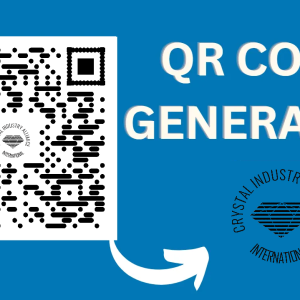2025 International Gem Jewelry Trend Research Report
I. Executive Summary
The 2025 gemstone jewelry market is driven by a powerful blend of sustainability, personalization, and cultural storytelling. As consumers seek deeper meaning and ethical sourcing, brands are redefining luxury with authenticity and transparency. This year, colored gemstones, alternative cuts, and symbolic designs dominate global markets.
II. Global Market Overview
- Market Growth: Estimated market value: $43.2 billion USD (projected 5.8% YoY growth).
- Key Markets: USA, China, India, UAE, France, and South Korea.
- Consumer Trends:
- High demand for lab-grown gemstones.
- Rising popularity of healing and metaphysical jewelry.
- Younger buyers (Gen Z & Millennials) are driving trends toward ethical luxury.
III. Gemstone Trends for 2025
1. Top Gemstones
| Gemstone | Key Attributes | Trending Colors |
|---|---|---|
| Sapphire | Regal, versatile, available in many hues | Cornflower blue, teal |
| Spinel | Affordable, brilliant alternative to ruby | Deep red, gray |
| Emerald | Luxury, timeless elegance | Vivid green |
| Tourmaline | Color range, modern aesthetic | Pink, bi-color |
| Tanzanite | Rare, mystical | Violet-blue |
| Moissanite | Ethical diamond alternative | Clear |
2. Cutting-Edge Cuts
- Freeform cuts: Embrace natural shape.
- Geometric cuts: Modern appeal, art deco revival.
- Rose cuts: Vintage inspiration with a contemporary twist.
IV. Design Aesthetics
1. Key Themes
- Celestial & Mythological Motifs: Stars, moons, goddesses.
- Raw & Organic Forms: Unpolished stones in minimal settings.
- Cultural Storytelling: Motifs from folklore and ancestral heritage.
- Genderless Jewelry: Unisex designs gaining traction.
2. Popular Styles
- Stackable Rings & Layered Chains
- Statement Earrings with Colored Stones
- Artisanal Craftsmanship & Hand-Forged Pieces
V. Materials & Sustainability
- Lab-Grown Gemstones: More accepted by luxury consumers.
- Recycled Metals: Increasing use of recycled gold/silver.
- Blockchain Certification: Used for origin traceability.
- Transparency: Full disclosure of gem origin, treatment, and cutting.
VI. Technology Integration
- AI-Driven Customization: Personalized gemstone selection via apps.
- AR Jewelry Try-Ons: Retailers using augmented reality for virtual fitting.
- Digital Provenance: NFTs and QR-linked certificates on jewelry.
VII. Regional Insights
| Region | Distinct Trend |
|---|---|
| North America | Engagement rings with non-diamond stones |
| Europe | Vintage and heritage-inspired designs |
| Asia-Pacific | Feng Shui and zodiac-themed gemstone pieces |
| Middle East | High-carat luxury and bold colored stones |
| Africa | Local gem sources and artisanal export rise |
VIII. Forecast & Strategic Recommendations
- Future Focus:
- Increased investment in sustainable sourcing and digital traceability.
- Expand offerings in custom design platforms.
- Collaborate with local artisans and storytellers for authenticity.
- Embrace AI, VR, and digital marketing to engage younger demographics.
2025 International Gemstone Jewelry Trend Research Report
1. Sustainability and Ethical Sourcing Dominate Consumer Preferences
The demand for lab-grown gemstones and ethically sourced materials has surged, driven by heightened environmental consciousness. Lab-grown diamonds now account for 15% of global production, with prices dropping to 30-50% of natural stones due to advancements in MPCVD technology . Brands like De Beers and Brilliant Earth emphasize blockchain traceability to verify gemstone origins, enhancing transparency and trust . Additionally, recycled metals and RJC-certified sustainable practices are becoming industry standards, particularly in Europe and North America .
2. Technological Integration Reshapes Design and Retail
- Smart Jewelry: Sensors and NFC chips are embedded in rings and bracelets for health monitoring and contactless payments, blending functionality with luxury .
- AR/VR and AI: Augmented reality enables virtual try-ons, while AI-driven platforms like James Allen offer 360-degree gemstone views for personalized shopping .
- 3D Printing and Laser Cutting: These technologies enable intricate, customizable designs, such as geometric patterns and nature-inspired motifs, catering to Gen Z’s appetite for uniqueness .
3. Bold Designs and Cultural Fusion Lead Aesthetic Trends
- Maximalist Statements: Oversized gemstone rings, chunky gold chains, and sculptural earrings reflect a shift from minimalism to bold self-expression .
- Nature and Retro Revival: Floral motifs, raw gemstones, and Baroque-inspired designs merge organic beauty with historical artistry .
- Mixed Metals: Combining gold, platinum, and rose gold in single pieces creates versatile, layered aesthetics .
4. Regional Market Dynamics and Growth Hotspots
- Asia-Pacific Dominance: China and India drive 45% of global demand, fueled by rising incomes and cultural significance of jewelry in weddings and festivals. China’s Q1 2025 gemstone sales grew 12.3%, outpacing overall luxury markets .
- ASEAN’s Rising Influence: Thailand’s JGAB 2024 trade show highlights the region’s $12.42 billion projected market by 2033, with lab-grown diamonds and Thai designers gaining global traction .
- North America and Europe: Focus on high-end customization and sustainable luxury, with Tiffany & Co. and Cartier leading in craftsmanship and blockchain-based certifications .
5. Investment and Supply Chain Challenges
- Scarcity Drives Value: Rare gems like Paraiba Tourmaline (over $70,000 per carat) and Tsavorite Garnet face supply constraints due to East African mining policies, pushing prices upward .
- Geopolitical Risks: Myanmar’s ruby exports dropped 40%, while Colombia’s emerald ESG compliance costs rose to 12% of production value, urging diversification to African and Brazilian mines .
- NFT and Digital Assets: Blockchain-certified gemstones and NFT trading reached $4.3 billion in 2025, offering new investment avenues .
Future Outlook and Strategic Recommendations
- Prioritize Sustainability: Adopt carbon-neutral practices and ethical sourcing to align with EU/US regulations (e.g., 2026 ESG audits) .
- Leverage Technology: Integrate AR for virtual customization and AI for dynamic inventory management to capture Gen Z’s 46% market share .
- Target Emerging Markets: Expand in Southeast Asia and Africa, where lab-grown gemstone demand is rising alongside local mining growth .
- Innovate in Design: Collaborate with independent designers for niche markets (e.g., Spessartite Garnet jewelry) and leverage social media for viral trends .
This report synthesizes trends from global market shifts, technological breakthroughs, and evolving consumer values, positioning 2025 as a transformative year for gemstone jewelry.


Leave a Reply
Want to join the discussion?Feel free to contribute!